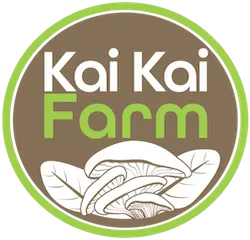
🌿 Bokashi Composting FAQ
What is Bokashi composting?
Bokashi composting is an anaerobic fermentation process that transforms food waste into nutrient-rich pre-compost using beneficial microorganisms. Unlike traditional composting, Bokashi can handle a wider variety of food scraps, including meat, dairy, and cooked foods, making it ideal for indoor use and small spaces.
🌿 Bokashi Composting: 4 Easy Steps
Step 1: Add Food Waste
Place your kitchen scraps into the Bokashi bin. Unlike traditional composting, Bokashi allows for a wider variety of food waste, including:
- Fruits and vegetables
- Cooked and raw meats
- Dairy products
- Grains and pasta
- Bread and other baked goods
Step 2: Sprinkle Bokashi Bran
After adding food waste, sprinkle a layer of Bokashi bran over the top. This bran contains beneficial microorganisms that ferment the waste, preventing odours and promoting decomposition. Ensure each layer of food waste is adequately covered with bran.
Step 3: Compress and Seal
Use a masher or similar tool to press down the contents, removing as much air as possible. Bokashi composting is an anaerobic process, so minimising air pockets is crucial. After compressing, seal the bin tightly to maintain the anaerobic environment.
Step 4: Repeat Until Full
Continue the process of adding food waste, sprinkling bran, compressing, and sealing until the bin is full. Once full, allow the contents to ferment for about 10-14 days. During this period, you can drain the liquid byproduct, known as Bokashi tea, every few days. This nutrient-rich liquid can be diluted and used as a fertiliser for plants.
After Fermentation:
Once the fermentation period is complete, the contents of the bin will have a pickled smell and may show white mould—both signs of successful fermentation. You can then:
- Bury the fermented waste in your garden soil to further decompose and enrich the soil.
- Add it to your traditional compost pile to accelerate the composting process.
Tips:
- Keep the bin in a warm, indoor location to facilitate fermentation.
- Avoid adding excessive liquids or oily foods, as they can hinder the fermentation process.
- If you notice any foul odours, it may indicate the presence of unwanted bacteria; ensure you’re using enough Bokashi bran and maintaining an airtight environment.
🌿 Bokashi Composting FAQ
What can I put in my Bokashi bin?
You can add most kitchen scraps, including:
- Fruit and vegetable peels
- Cooked and raw meat
- Dairy products
- Bread and grains
- Coffee grounds and tea bags
How do I use the Bokashi system?
- Place a layer of food waste into the Bokashi bin.
- Sprinkle a handful of Bokashi bran over, lightly covering the waste.
- Press down the contents to remove air pockets.
- Seal the lid tightly to maintain anaerobic conditions.
- Repeat until the bin is full, then let it ferment for 10-14 days.
During fermentation, drain the liquid (Bokashi tea) every few days.
What is Bokashi tea, and how do I use it?
Bokashi tea is the liquid byproduct of the fermentation process. It’s rich in nutrients and beneficial microbes. Dilute it with water at a ratio of 1:100 and use it to fertilize plants or pour it down drains to help maintain healthy plumbing
Can I keep my Bokashi bin outside?
It’s best to keep the Bokashi bin indoors or in a sheltered area, as extreme temperatures and direct sunlight can affect the fermentation process. Room temperature is ideal.
What do I do with the fermented waste?
After fermentation, the waste (pre-compost) can be:
- Buried directly in the garden to enrich the soil.
- Added to a traditional compost pile to continue decomposition.
- Placed in a worm farm, if the worms are accustomed to fermented food.
Ensure the pre-compost is mixed well with soil and kept moist to facilitate further breakdown.
Is Bokashi composting suitable for small spaces?
Yes, Bokashi composting is ideal for apartments and homes with limited outdoor space. The system is compact, odourless when used correctly, and can be kept under the kitchen sink or in a cupboard.
